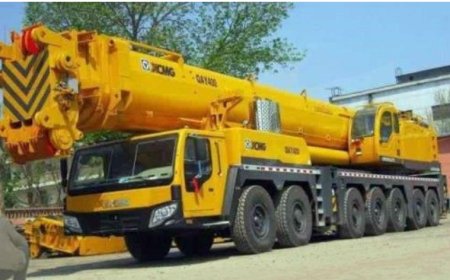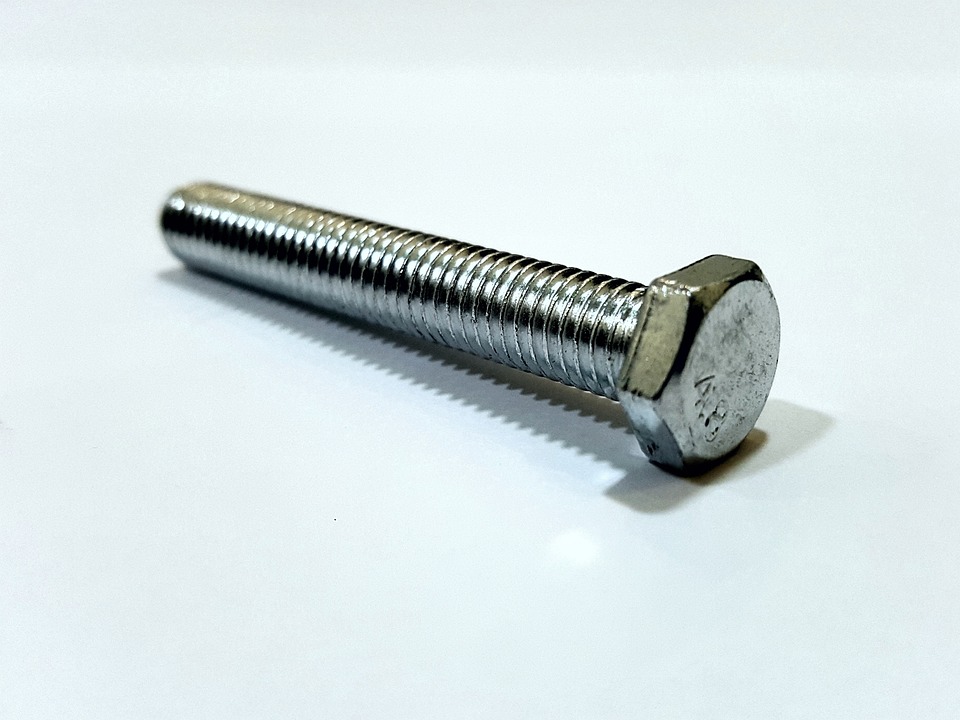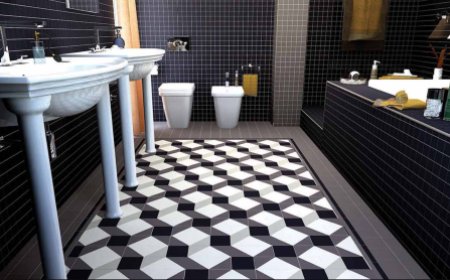How to Find New Orleans Craft Coffee Shops
How to Find New Orleans Craft Coffee Shops New Orleans is a city where culture, history, and flavor converge on every corner. From jazz-filled streets to Creole cuisine, the sensory experience is rich and layered. But one of the most quietly revolutionary aspects of the city’s modern identity is its booming craft coffee scene. Unlike the traditional café au lait served in iconic spots like Café du
How to Find New Orleans Craft Coffee Shops
New Orleans is a city where culture, history, and flavor converge on every corner. From jazz-filled streets to Creole cuisine, the sensory experience is rich and layered. But one of the most quietly revolutionary aspects of the city’s modern identity is its booming craft coffee scene. Unlike the traditional café au lait served in iconic spots like Café du Monde, New Orleans’ craft coffee movement is defined by small-batch roasters, direct-trade beans, pour-overs, and experimental brewing methods that honor both local heritage and global innovation.
Finding these hidden gems isn’t as simple as searching “coffee near me.” Many of the city’s best craft coffee shops operate with low-key branding, limited online presence, and deep community roots. They don’t rely on mass advertising—they thrive on word-of-mouth, local loyalty, and the passion of baristas who treat coffee as an art form. For visitors and residents alike, discovering these spaces means going beyond the tourist brochures and tapping into the pulse of a new culinary movement.
This guide is your comprehensive roadmap to uncovering New Orleans’ most authentic, high-quality craft coffee shops. Whether you’re a coffee enthusiast seeking nuanced flavor profiles, a digital nomad looking for a quiet workspace, or a traveler wanting to experience the city like a local, this tutorial will equip you with the knowledge, tools, and strategies to find the best craft coffee experiences New Orleans has to offer.
Step-by-Step Guide
Step 1: Understand What Makes Coffee “Craft” in New Orleans
Before you start searching, you need to know what distinguishes craft coffee from standard café fare. In New Orleans, craft coffee is defined by:
- Small-batch roasting – Beans roasted in-house or by local roasters in quantities under 1,000 pounds per week.
- Direct trade or transparent sourcing – Roasters who know the farmers, regions, and harvest dates of their beans, often sharing this information on packaging or menus.
- Specialty-grade beans – Coffee scoring 80+ on the Specialty Coffee Association (SCA) scale, indicating exceptional quality.
- Manual brewing methods – Pour-over, AeroPress, Chemex, siphon, and cold brew on tap, rather than mass-produced espresso machines.
- Community focus – Shops that host cuppings, latte art workshops, or collaborate with local artists and musicians.
Recognizing these markers helps you filter out chains and mass-market cafés that use “craft” as a marketing buzzword. True craft coffee in New Orleans is intentional, traceable, and deeply rooted in quality.
Step 2: Use Local Food and Beverage Blogs and Podcasts
One of the most reliable ways to find authentic craft coffee shops is through hyperlocal content creators who live and breathe New Orleans’ food culture. These voices are often more accurate than Google Maps or Yelp because they visit repeatedly, build relationships with owners, and understand the nuances of the scene.
Start with these trusted sources:
- The NOLA Foodie – A blog dedicated to independent eateries, with detailed reviews of coffee shops including roast profiles and barista interviews.
- Where NOLA Eats – A podcast series that features rotating coffee shop spotlights, often including behind-the-scenes tours of roasting facilities.
- NOLA.com’s Food & Drink Section – Regularly publishes curated lists like “10 New Orleans Coffee Shops You Haven’t Tried (But Should)” with updated seasonal recommendations.
Subscribe to newsletters from these outlets. Many craft coffee shops announce pop-ups, limited-edition beans, or single-origin releases exclusively through email lists.
Step 3: Explore Neighborhoods Known for Coffee Innovation
New Orleans’ craft coffee scene isn’t evenly distributed. Certain neighborhoods have become epicenters of innovation due to lower rents, artistic communities, and strong local support. Focus your search here first:
- Bywater – The heart of the city’s craft coffee revolution. Home to multiple roasteries and minimalist cafes with outdoor seating, live music, and rotating art exhibits.
- Marigny – A bohemian neighborhood where coffee shops double as community hubs, often featuring vinyl listening stations and local zine libraries.
- Mid-City – A quieter, residential area with hidden gems like Black Pearl Coffee Co. and Persephone Coffee, known for their precision brewing and sustainable packaging.
- Algiers Point – Across the river from the French Quarter, this historic neighborhood has seen a coffee renaissance with shops offering stunning river views and slow-roasted Ethiopian beans.
- Uptown – While known for its grand architecture, Uptown is also home to Cooperativa Coffee, a cooperative-owned shop that sources beans directly from Guatemalan cooperatives.
Use Google Maps to set a radius of 1–2 miles around these neighborhoods and filter for “coffee” with a 4.5+ star rating. Then, cross-reference the results with the blogs mentioned above to identify which ones are truly craft-focused.
Step 4: Search Social Media with Strategic Hashtags
Instagram and TikTok are goldmines for discovering new craft coffee spots. Unlike Yelp reviews, which can be outdated or biased, social media offers real-time, visual proof of quality and atmosphere.
Use these hashtags to find authentic content:
NOLACraftCoffee
– The most popular tag with over 15,000 posts, often featuring latte art, roast batches, and behind-the-scenes roasting footage.NOLAcoffee
– A broader tag that includes both craft and traditional spots; filter by recent posts to find new openings.PourOverNOLA
– Targets shops specializing in manual brewing.NOLACoffeeRoaster
– Identifies businesses that roast their own beans.ThirdWaveNOLA
– A term used by enthusiasts to describe the “third wave” of coffee culture (emphasis on origin, technique, and sustainability).
Follow local coffee influencers like @nolacoffeechronicles or @brewinginbywater. They regularly post unannounced pop-ups, new bean arrivals, and seasonal menus. Engage with their posts—many shop owners respond to direct messages and will share insider tips if you show genuine interest.
Step 5: Visit Farmers Markets and Local Art Fairs
Many New Orleans craft coffee roasters don’t maintain physical storefronts full-time. Instead, they sell their beans and brews at weekly farmers markets or monthly art fairs. These events are prime opportunities to meet the roasters, sample their coffee, and learn about their sourcing practices.
Key events to attend:
- French Market Farmers Market – Held every Saturday morning, featuring at least 3–5 rotating craft coffee vendors.
- Bywater Art Walk – Monthly event where local coffee roasters set up pop-up stations alongside painters and sculptors.
- Bayou Boogaloo – A summer music and food festival with a dedicated “Brew & Sip” zone showcasing regional coffee artisans.
Bring a small notebook or phone to record names, locations, and tasting notes. Many of these vendors will give you their website or Instagram handle on a business card or sticker.
Step 6: Join Local Coffee Communities and Forums
Online communities are where the most passionate coffee lovers share secrets. These aren’t generic Reddit threads—they’re hyper-local groups with deep institutional knowledge.
Join these Facebook groups:
- New Orleans Coffee Enthusiasts – Over 8,000 members who post daily about new releases, tasting notes, and shop reviews. Search the group’s archive for “hidden gems” or “best pour-over.”
- Third Wave NOLA – A more technical group focused on brewing methods, water chemistry, and equipment recommendations. Members often share links to new roasters before they open to the public.
- Women Who Brew NOLA – A supportive network highlighting female-owned and operated coffee businesses, many of which are craft-focused.
Ask specific questions: “Which shop has the most consistent Ethiopian Yirgacheffe this month?” or “Who roasts the best natural process beans in the city?” The responses will lead you to shops you’d never find on Google.
Step 7: Use Google Maps Filters and Advanced Search Techniques
Google Maps is powerful when used strategically. Here’s how to optimize your search:
- Search “coffee shop” in New Orleans.
- Filter by “Open Now” and “Highly Rated (4.5+).”
- Click “More Filters” and select “Coffee Roaster” or “Café” under “Amenities.”
- Look for shops with photos uploaded by users—not stock images. Real photos show brewing equipment, bean bags with origin labels, and chalkboards listing roast dates.
- Read reviews for keywords like: “single origin,” “hand-poured,” “roasted in-house,” “direct trade,” or “no espresso machine.”
- Sort reviews by “Recent” to find newly opened spots.
Pro tip: Search for “coffee roaster near me” instead of “coffee shop.” This filters out chain stores and highlights businesses that roast their own beans—a hallmark of craft coffee.
Step 8: Ask Locals—But Ask the Right Way
Asking “Where’s the best coffee in New Orleans?” will get you Café du Monde. To find craft coffee, ask better questions:
- “Which shop roasts their own beans?”
- “Where do you go for a pour-over that tastes like fruit and chocolate?”
- “Who’s the roaster that sources from the Sidama region?”
- “Which café has a new bean release every two weeks?”
Ask baristas at established coffee shops. They often know the best competitors because they’re part of the same community. Ask a barista at Coop Coffee: “Who’s your favorite roaster you don’t carry?” They’ll likely name a hidden gem.
Also, talk to people who work in related industries—florists, bookstore owners, yoga instructors. They often have favorite coffee spots they visit before work.
Step 9: Track Seasonal and Limited-Edition Releases
Craft coffee is inherently seasonal. Beans from Ethiopia’s Yirgacheffe region are harvested between October and January, while Colombian beans peak in April–June. The best craft shops rotate their menus monthly based on harvest cycles.
Set up Google Alerts for:
- “New Orleans coffee new release”
- “NOLA single origin coffee”
- “NOLA microbatch roast”
Many shops announce limited batches via Instagram Stories or email newsletters. If you sign up for alerts from 5–7 top craft shops, you’ll be among the first to know when a rare Panamanian Geisha or Burundi Karaba bean arrives.
Step 10: Visit and Verify
After compiling your list of 10–15 potential shops, visit them in person. Look for these indicators of authenticity:
- Roast dates on bean bags – Craft roasters print the roast date, not just a “best by” date.
- Origin information – The farm, region, altitude, and processing method should be listed.
- Barista knowledge – They should be able to describe flavor notes, brewing parameters, and sourcing stories.
- Equipment – Look for a Hario V60, Chemex, or Kalita Wave, not just a Nespresso machine.
- Menu diversity – Multiple brewing methods offered, not just espresso and drip.
If a shop lacks any of these, it’s likely not craft-focused. Don’t be afraid to ask: “Where are these beans from?” or “When were they roasted?” Genuine craft shops welcome these questions.
Best Practices
1. Prioritize Transparency Over Branding
Aesthetically pleasing interiors and branded mugs are nice, but they don’t make a shop craft. The best craft coffee shops prioritize transparency: they tell you where their beans come from, how they were processed, and who grew them. Look for shops that display sourcing maps, farmer bios, or roast logs on their walls or websites.
2. Support Roasters Who Partner with Local Artists
Many New Orleans craft roasters collaborate with local illustrators and musicians for packaging and events. This isn’t just marketing—it’s cultural integration. Supporting these shops means supporting the broader creative ecosystem of the city.
3. Avoid “Coffee Shops” That Also Sell Smoothies, Smoothie Bowls, or Vegan Pastries
While there’s nothing wrong with plant-based options, a shop that tries to be everything to everyone often lacks focus. True craft coffee shops specialize. Their menu might be 5 items long: 3 single-origin brews, 1 cold brew, and 1 house-made oat milk latte. That’s intentional.
4. Learn Basic Coffee Terminology
Understanding terms like “washed process,” “anaerobic fermentation,” or “body” helps you communicate better with baristas and evaluate quality. Read short guides from the SCA or watch 10-minute YouTube explainers on coffee processing methods. This knowledge transforms you from a casual drinker to an informed enthusiast.
5. Visit During Off-Peak Hours
Many craft coffee shops are small and quiet during weekday mornings. This is the best time to chat with the owner, ask questions, and observe the brewing process. Weekends are often crowded with tourists. Go Tuesday at 10 a.m. for the most authentic experience.
6. Bring Your Own Reusable Cup
Most craft coffee shops offer discounts for bringing your own cup. It’s also a sign of alignment with their sustainability values. Many use compostable packaging, but they appreciate customers who reduce waste further.
7. Leave Detailed Reviews (Without Overhyping)
When you find a great shop, leave a thoughtful review on Google or Yelp. Mention specific details: “The Ethiopian Yirgacheffe had notes of bergamot and blueberry, brewed at 93°C with a 1:16 ratio.” This helps others find authentic spots and discourages spammy or generic reviews.
8. Attend Cuppings and Tastings
Many craft shops host free or low-cost cuppings (coffee tastings) once a month. These events let you sample 4–6 different beans side by side, guided by a roaster. It’s the best way to develop your palate and discover your preferences.
9. Don’t Judge by Price Alone
Craft coffee isn’t always expensive. Some shops charge $4 for a pour-over because they’re direct-trade and efficient. Others charge $8 because they source rare beans from micro-lots. Focus on value, not cost. Ask: “What makes this coffee special?” The answer will tell you more than the price tag.
10. Build Relationships, Not Just Checklists
The most rewarding craft coffee experiences come from returning to the same shop, remembering the barista’s name, and learning their story. These relationships lead to exclusive access—early tastings, private tours, or invitations to bean auctions. Coffee isn’t just a drink here; it’s a community.
Tools and Resources
Online Directories
- Specialty Coffee Association’s Coffee Shop Locator – A global database that includes verified craft roasters in New Orleans.
- Atlas Coffee Club’s City Guides – Offers curated lists of top craft coffee spots in New Orleans with tasting notes and roaster profiles.
- Beanhunter.co – A crowdsourced map of coffee roasters worldwide. Filter by “New Orleans” and “Direct Trade.”
Mobile Apps
- Untappd – Originally for beer, but now includes coffee shops. Users rate and review brews, often with detailed tasting notes.
- Yelp (with filters) – Use the “Coffee Roaster” filter and sort by “Highest Rated” and “Recent.”
- Google Maps (Advanced Search) – As detailed in Step 7, use location filters, photo reviews, and keyword searches.
Podcasts and YouTube Channels
- “The Daily Grind” (NOLA Edition) – A weekly podcast featuring interviews with New Orleans roasters.
- “Coffee With a View” (YouTube) – Features drone footage of coffee shops across the city, paired with owner interviews.
- “Third Wave Coffee” (YouTube) – Educational content on brewing techniques used by New Orleans baristas.
Books and Guides
- “The New Orleans Coffee Guide” by Lila Dupré – A locally published guide with 50+ vetted craft shops, maps, and historical context.
- “Coffee: A Global History” by Jonathan Morris – Provides context on how New Orleans fits into global coffee trends.
- “The World Atlas of Coffee” by James Hoffmann – Helps you understand origin profiles you’ll encounter in New Orleans shops.
Local Organizations
- NOLA Coffee Collective – A nonprofit that supports independent roasters and hosts annual coffee festivals.
- Women in Coffee New Orleans – A network promoting female-led coffee businesses and offering mentorship.
- Louisiana Coffee Growers Association – Although Louisiana doesn’t grow coffee, this group advocates for ethical sourcing and sustainable practices.
Real Examples
1. Black Pearl Coffee Co. – Bywater
Founded in 2018 by a former barista from Portland, Black Pearl roasts all beans in-house on a 1kg Probat machine. Their signature offering is the “NOLA Noir” blend—a dark roast with hints of chicory, molasses, and smoked almond—crafted to honor the city’s traditional coffee heritage while using modern, single-origin beans. The shop has no Wi-Fi, no loud music, and only three tables. It’s a place to sit, sip, and reflect. Their Instagram (@blackpearlnola) shows daily roast logs and farmer profiles. A must-visit for purists.
2. Persephone Coffee – Mid-City
Persephone is a zero-waste, solar-powered café that sources 100% of its beans from women-led cooperatives in Colombia and Rwanda. Their menu features rotating single-origin pour-overs, each paired with a handwritten note about the farmer. They host monthly “Cupping & Conversation” events where patrons discuss ethics in coffee. Their oat milk is made in-house using locally grown oats. Persephone doesn’t advertise—it grows through community trust.
3. Cooperativa Coffee – Uptown
A worker-owned cooperative since 2016, Cooperativa is a model of democratic business. All profits are shared among staff. They roast their own beans and offer a “Brew Your Own” station where customers can experiment with different grind sizes and water temperatures under staff supervision. Their cold brew is aged for 20 hours in oak barrels—a signature technique developed in-house. The shop’s walls are covered in murals painted by local artists, each representing a coffee-growing region.
4. The Roasting Room – Algiers Point
Located in a converted 1920s warehouse, The Roasting Room offers stunning views of the Mississippi River and a rotating selection of rare beans. They’ve partnered with a Guatemalan family farm to source a limited-edition Gesha varietal that sells out within days of release. Their tasting flights include 3 brews: a washed Ethiopian, a natural Brazilian, and a honey-processed Costa Rican. The owner, Miguel, personally visits the farms twice a year. His Instagram stories show the harvests, and customers can book virtual tours.
5. Fleur de Lis Roasters – Marigny
Founded by a jazz musician turned roaster, Fleur de Lis combines music and coffee. Each roast batch is named after a New Orleans jazz standard. Their “St. James Infirmary” blend (a medium roast with citrus and caramel notes) is their bestseller. They host weekly vinyl nights where patrons can sip coffee while listening to 1920s jazz records. The shop is open only Thursday–Sunday, and they never open on holidays. Their exclusivity is part of their charm.
FAQs
What’s the difference between New Orleans coffee and craft coffee?
Traditional New Orleans coffee is typically dark-roasted, blended with chicory, and brewed with a drip filter or French press. It’s bold, smoky, and sweet. Craft coffee focuses on origin, light to medium roasts, and highlighting natural flavors like floral, fruity, or chocolatey notes. Craft coffee rarely includes chicory unless it’s a deliberate, experimental blend.
Are there any craft coffee shops in the French Quarter?
Yes, but they’re rare. The French Quarter is dominated by tourist-oriented cafés. However, Cooperativa Coffee has a small satellite location on Royal Street that offers their full craft menu. Look for shops that don’t have “Café du Monde” signs or plastic cups.
Do craft coffee shops in New Orleans serve food?
Most serve minimal food: pastries, toast, or locally made granola. If a shop has a full kitchen, it’s likely not focused on craft coffee. The best ones keep their menus simple to preserve coffee quality.
Is craft coffee more expensive in New Orleans?
Prices are comparable to other major U.S. cities. A pour-over typically costs $4–$7. The difference is value: you’re paying for traceability, quality, and craftsmanship, not just caffeine.
Can I buy beans to take home?
Almost all craft coffee shops sell whole beans. Many offer subscription services for monthly deliveries. Look for bags with roast dates printed clearly—this is a sign of quality.
Do any shops offer vegan or dairy-free options?
Yes. Most craft shops offer oat, almond, or coconut milk. Some even make their own plant-based milk in-house. Ask about their sourcing—many use organic, locally produced alternatives.
How often do craft coffee shops change their menu?
Every 2–4 weeks, depending on bean harvests. Some change weekly. Check their social media or sign up for email updates to stay informed.
Are there any coffee tours in New Orleans?
Yes. The NOLA Coffee Trail offers guided walking tours of 4–5 craft shops in Bywater and Marigny. Tours include tastings, roastery visits, and historical context. Book through their website—space is limited.
What’s the best time of year to visit for coffee?
October–December is ideal. This is when new harvests from Ethiopia and Central America arrive. Many shops release their most anticipated single-origins during this period.
Can I work remotely at these shops?
Many welcome digital nomads. Look for shops with outlets, quiet corners, and no loud music. Avoid places that are crowded on weekends. Weekday mornings are best for focus.
Conclusion
Finding New Orleans craft coffee shops isn’t about checking boxes on a list—it’s about immersing yourself in a culture of care, curiosity, and connection. These shops are more than places to drink coffee; they’re community centers, art galleries, and living archives of global agriculture and local creativity. Each cup tells a story: of farmers in remote highlands, of roasters experimenting in tiny warehouses, of baristas who remember your name and your preferred brew.
By following the steps in this guide—using local blogs, exploring neighborhoods, engaging on social media, attending events, and asking thoughtful questions—you move beyond tourism and into authenticity. You stop being a customer and become a participant in a movement that values quality over quantity, transparency over trend, and people over profit.
The best craft coffee in New Orleans isn’t the one with the most Instagram likes. It’s the one you discover by walking into a quiet shop on a Tuesday morning, asking the barista where their beans came from, and listening to the answer. That’s when you taste not just coffee, but culture.
So put down the tourist map. Grab a reusable cup. Explore a neighborhood you’ve never visited. And let the aroma guide you.




















